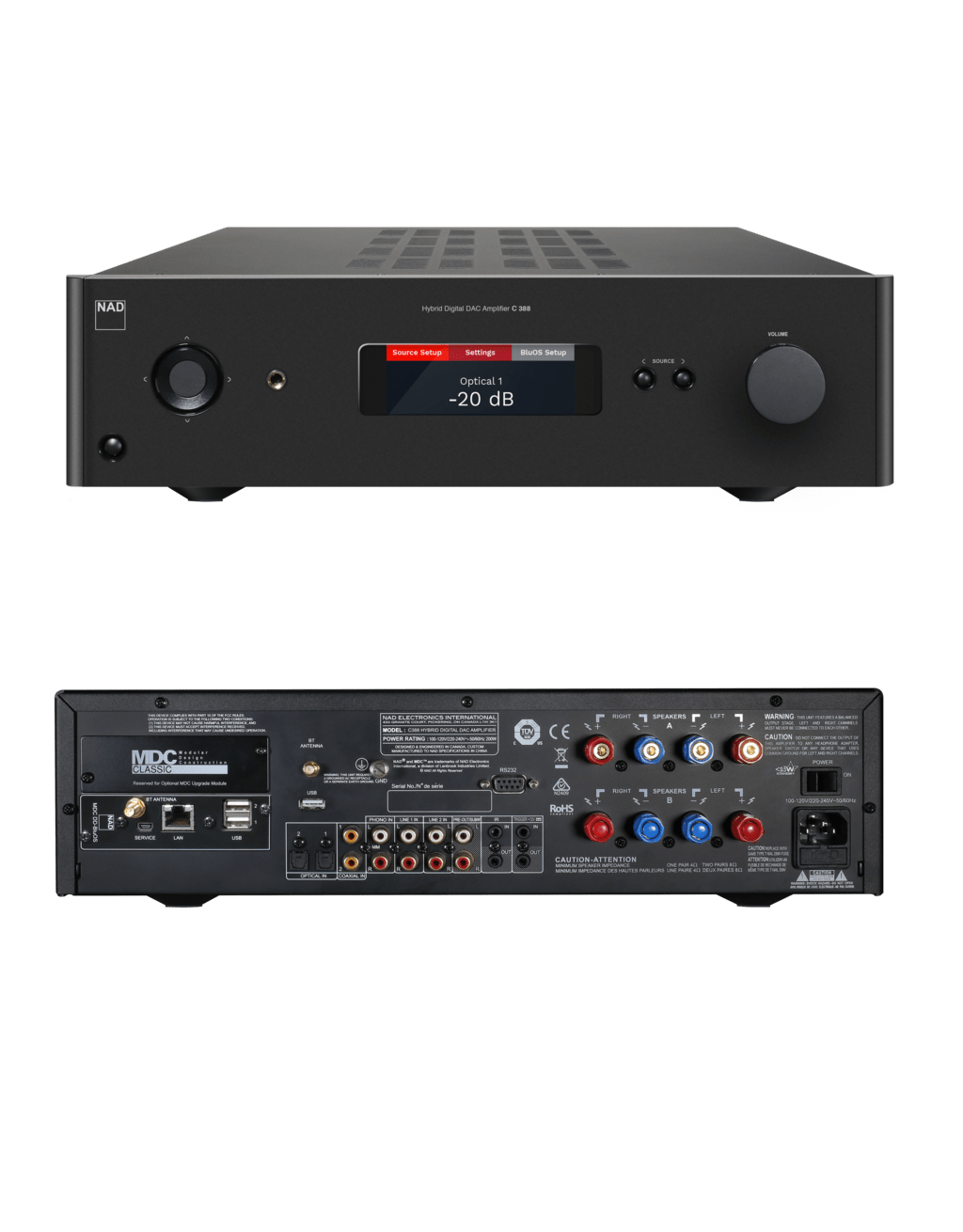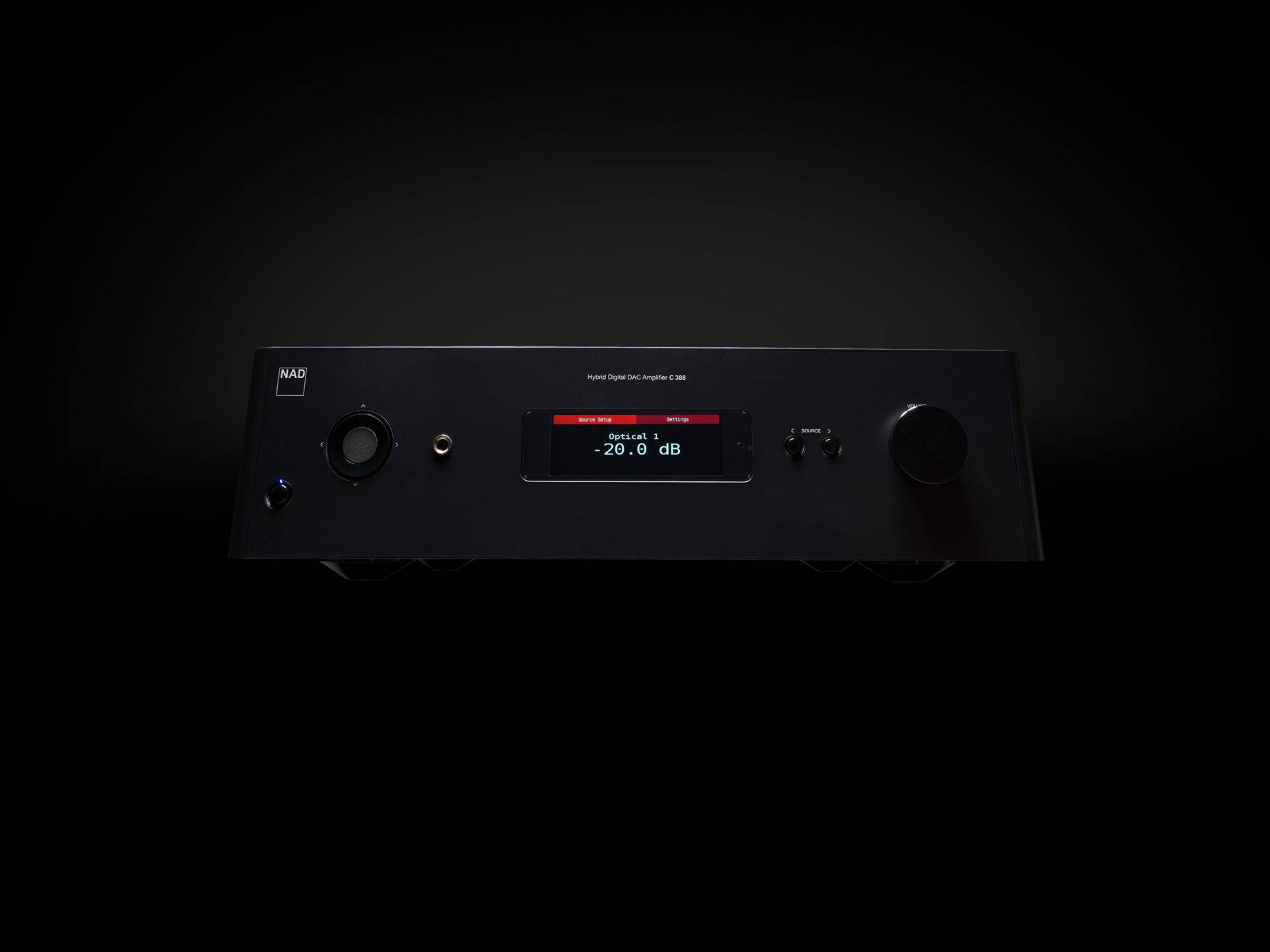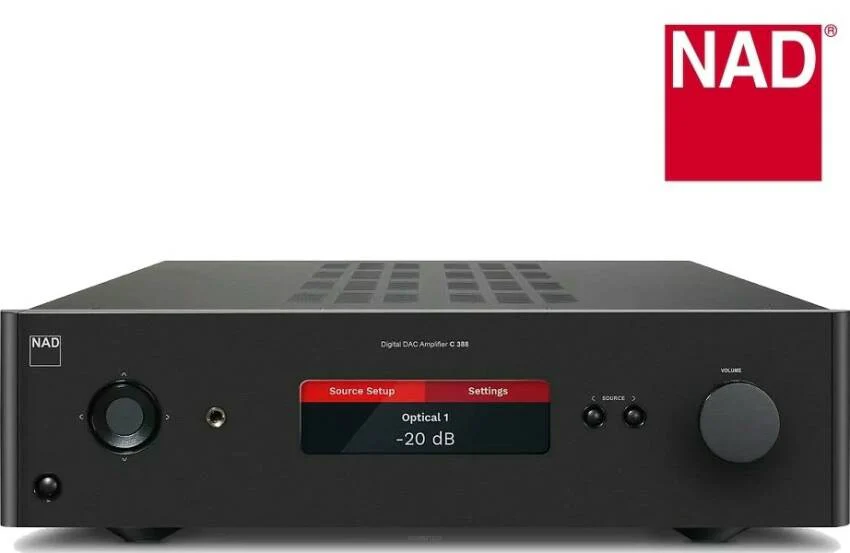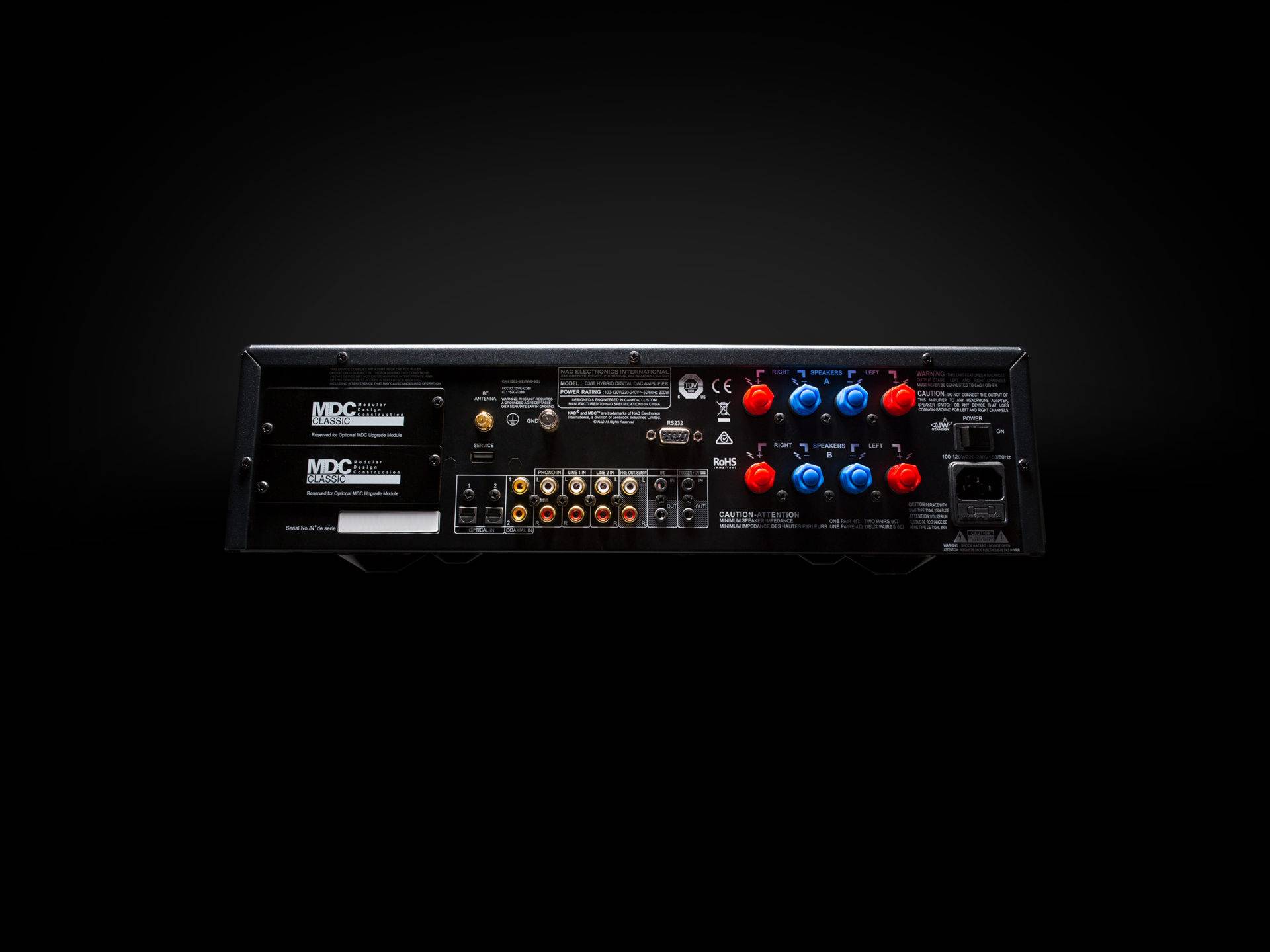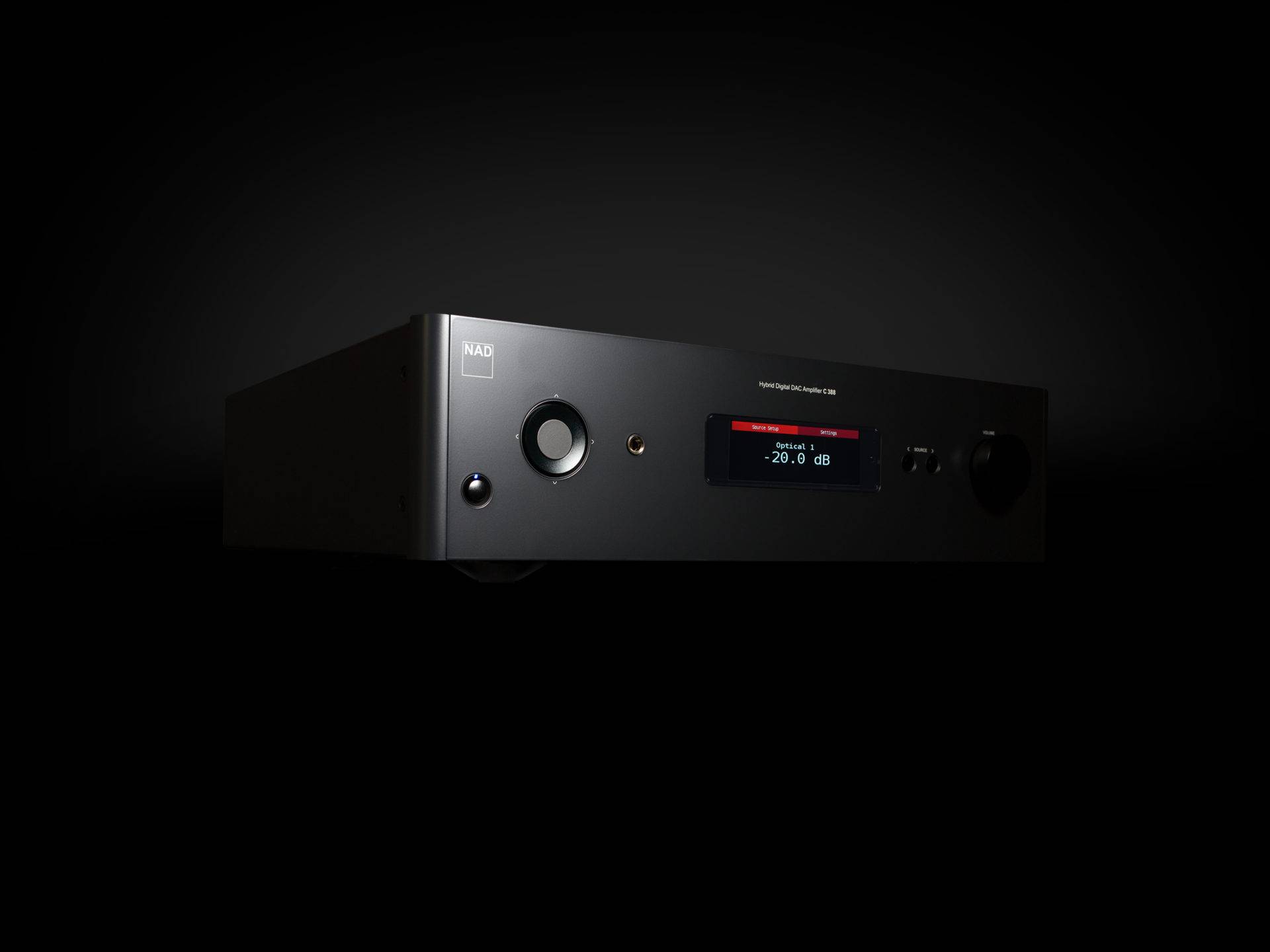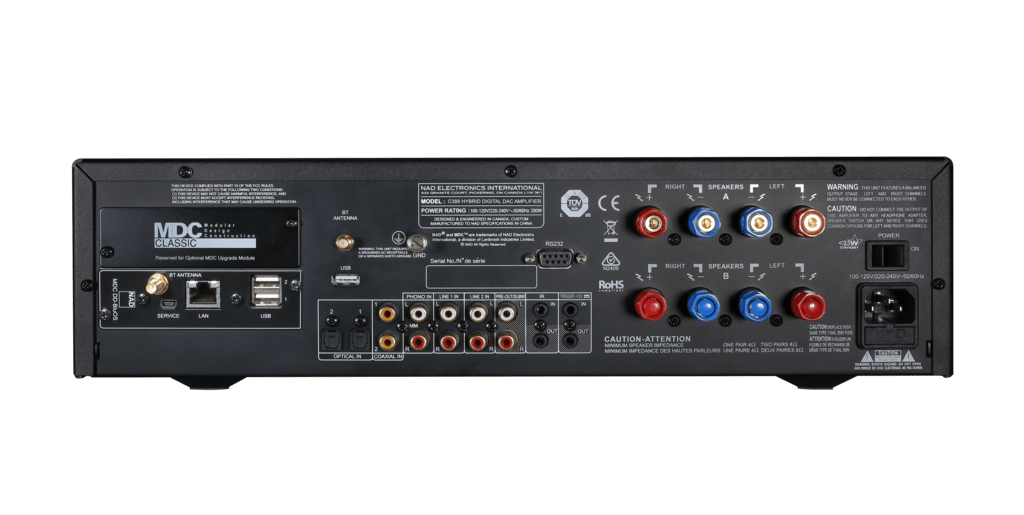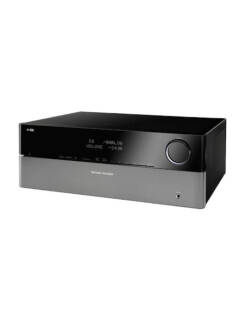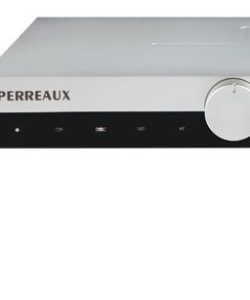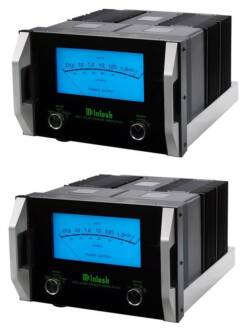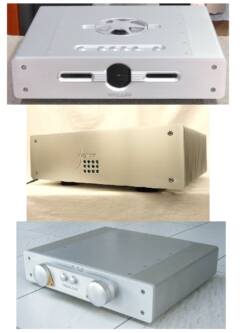NAD C388 Integrated amplifier with DAC
Original price was: R36,000.00.R16,000.00Current price is: R16,000.00.
Key Features
- 150W x 2 Continuous power into 8 or 4 Ohms
- Bluetooth A2DP with aptX supported
- MM Phono input
- Analogue line inputs
- USB port for service purposes
- SPDIF coax and optical inputs
- Speaker A, Speaker B
- Preamp/Subwoofer out
- Headphone amplifier
- MDC Slots for future upgrades
- IR remote
- Smartphone Control App
- 12V Trigger in/out
- IR in/out
- RS-232 Serial port for control
- Control4, Crestron, RTI, URC, AMX, Savant, Elan certified
Preamplifier
Line Input, Pre Out
- THD (20Hz-20kHz)
- <0.005% at 2V out
- Signal/Noise Ratio
- >106dB (IHF; A-weighted, ref. 500mV out, unity gain)
- Channel Separation
- >80dB (1kHz); >70dB (10kHz)
- Input Impedance (R and C)
- 22 kilohm + 100pF
- Maximum Input Signal
- >4.5Vrms (ref. 0.1% THD)
- Output Impedance
- Source Z + 240 Ohm
- Input Sensitivity
- 93mV (ref. 500mV out, Volume maximum)
- Frequency Response
- ±0.03dB (20Hz-20kHz)
- Maximum voltage output – IHF load
- >4.5V (ref. 0.1% THD)
- Tone Controls
- Treble: ±7.0dB at 20kHz
Bass: ±7.0dB at 60Hz
Balance: -10dB
Phono Input, Pre Out
- THD (20Hz-20kHz)
- <0.01% at 2V out
- Signal to Noise Ratio
- >84dB (200 Ohm source; A-weighted, ref. 500mV out)
>76dB (MM cartridge source, IHF; A-weighted, ref. 500mV out) - Input Sensitivity
- 1.44mV (ref. 500mV out, Volume maximum)
- Frequency Response
- ±0.3dB (20Hz-20kHz)
- Maximum Input Signal at 1kHz
- >80mVrms (ref. 0.1% THD)
Line Input, Headphone Out
- THD (20Hz-20kHz)
- <0.005% at 1V out
- Signal/Noise Ratio
- >110dB (32 Ohm loads; A-weighted, ref. 2V out, unity gain)
- Frequency Response
- ±0.3dB (20Hz-20kHz)
- Channel Separation
- >60dB at 1kHz
- Output Impedance
- 6 Ohms
General Specifications
- Continuous output Power into 4 Ohms and 8 Ohms (Stereo)
- >150W (at rated THD, 20-20kHz, both channels driven)
- IHF Dynamic Power
- 8 Ohm 250W
4 Ohm 350W
2 Ohm 400W - THD (20Hz-20kHz)
- <0.02% (250mW to 150W, 8 Ohm and 4 Ohm)
- Signal/Noise Ratio
- >95dB (A-weighted, 500mV input ref. 1W out in 8 Ohm)
- Clipping Power
- >160W (at 1kHz 0.1% THD)
- Peak Output Current
- >20A (in 1 Ohm, 1ms)
- Damping Factor
- >150 (ref. 8 Ohm, 20Hz and 6.5kHz)
- Frequency Response
- ±0.03 (20Hz-20kHz)
- Channel Separation
- >75dB (1kHz)
>70dB (10kHz) - Input Sensitivity (for 80W in 8 Ohm)
- Line In: 490mV; Phono In: 7.5mV; Digital In: 24% FS
- Sample Rate
- up to 24 bit/192kHz
- Frequency Band
- 2.402G – 2.480G
- Maximum Transmit Power (dBm)
- 7dBm ±2dBm
Power Consumption
- at Auto Standby ON and Network Standby OFF
- 0.5 Watts*
- at Auto Standby ON and Network Standby ON
- 1.2 Watts**
- OFF mode (Power switched OFF)
- 0.1 Watts
* – After 20 minutes of no user interface interaction and no active source input
** – With established wireless Bluetooth connectivity and 20 minutes of no user interface interaction and no active source input
NOTE: Bluetooth connectivity is always live when configured
Weight & Dimensions
- Gross Dimensions (W x H x D)*
- 435 x 120 x 390mm (17 1/8 x 4 3/4 x 15 3/8)”
- Net Weight
- 11.2kg (24.7lb)
- Shipping Weight
- 13.6kg (30lb)
*Gross dimensions include feet, extended buttons and rear panel terminals
Description
NAD Electronics’ C388 Hybrid Digital DAC Amplifier is a bit of a mouthful, but it’s an accurate description of NAD’s new integrated architecture. We take a closer look at this well-equipped integrated amplifier.
NAD Electronics
C388 Hybrid Digital DAC Amplifier
$2,299 RRP
NAD Electronics’ C388 Hybrid Digital DAC Amplifier is a bit of a mouthful, but it’s an accurate description of NAD’s new integrated architecture that grew from the combination of its Direct Digital technology, and Hypex’s “Ultimate Class D” (or ucD) power modules.
The NAD C388 Integrated Amplifier is the current top of the range below its Masters series, offering 150 watts per channel.
NAD Electronics is a company that holds a special place in the history of consumer audio. Since their inception in 1972 they set out to create exceptional amplifiers at realistic prices, and this remains their goal today. One of the most memorable of their success stories is the famous NAD 3020 first released in 1978, and its many variations that followed over the next decade and a half.
I have a 3120 in my possession, and I will eagerly add my voice to all the others that claim it’s a very special amplifier. Even today they remain something of a giant killer and are still highly sort after units in the second-hand market.
Visuals
Traditionally NAD favour understated looks. They prefer to let the performance of their gear do the talking, and this latest model range is no different.
Carbon black fronts with a functional (but not flashy) display and a minimum of dials and buttons can be found on the faceplates of the new model range. They appeal to those of us who like an uncluttered approach to audio.
While the visual side of things may not be as enticing as some other brands, the NAD does not suffer in the areas of performance or connectivity. The current crop of NAD integrated amps come with four digital inputs (2 x coaxial, 2 optical) and a Bluetooth connection in addition to a pair of analogue line inputs and an MM Phono input all as standard.
The higher models in the range (both C368 and C388) also support NADs Modular Design Construction (MDC) Upgrade Modules as optional extras.
The C388 as tested did not include any of these but purchasers can opt for any of the three currently available modules, including Wi-Fi connectivity and multi-format decoding (MDC BluOS), HDMI with 3D video support on pass through (DD HDM-1) or HDMI with 4K video support on pass through (DD HDM-2). Each module comes at an additional cost of course.
Sound decoding on all inputs is, of course, limited to 2 channels. A move to a receiver would be necessary to move up to multi-channel surround sound.
A fourth MDC card, the DD USB 2.0, is mentioned in the manual but not listed on the NAD website. Its function seems relatively straightforward, an asynchronous 24/96 type B USB input for computer source use and a standard USB port for direct connection of flash drives or mass storage devices.
The rear panel also contains jacks that support 12-volt trigger control to allow remote on/off control, plus IR in and out jacks. A pre/subwoofer out is on offer with the settings being user selectable via the main menu. The only USB slot on the amp is for service use only. And last, but not necessarily least, the RS232 port allows integration with AMX and Creston systems should any users wish to integrate with home automation options.
Two sets of speaker binding posts and a power plug and switch round out the back panel.
The aerial mounted on the back panel allows connection via Bluetooth of an assortment of sources. Setup is simple, select it as a source on the C388 and then find it on your device of choice and hit play. Very convenient, certainly for the younger generation.
The supplied SR-9 remote control is a fairly standard unit as far as multi-function remote controls go. It will control NAD Amplifiers, CD Players, AM/FM Tuners and dedicated DAB Tuners. It is a comfortable size and weight, and I was quite happy using it.
After some research on the Hypex module chosen by NAD for the C388, I found that although it is much smaller and seemingly less complex when compared to many of the other modules on offer from Hypex, the UcD 102 module is noted as being a consistent top performer in listening trials.
It is good to see that a company with such a long and rich audio history is still choosing parts based on subjective audio performance (and therefore enjoyment) and not just standard spec. figures like output wattage or THD.
The steel case of the C388 also warrants a mention, I feel. In addition to connectivity and sonic quality, it seems NAD also have a strong opinion on the subject of structural rigidity. The case is solid enough that it does not flex at all when picked up.
As usual, this review was performed using my YBA Heritage CD100 CD spinner (mostly as transport in this particular case), Aurealis coax digital cable, Redgum Audio Pipeline speaker cables and my old faithful Lenehan Audio S2R stand mount speakers.
But How Does It Sound?
In my listening tests, I found that the C388 is a little rolled off in the top end. It carries a soft and delicate feel to the lighter instruments while harder and metallic instruments do not sound hard or harsh at all.
Trumpets come across as much less raspy than usual and triangles softer and quite recessed. These attributes allow the C388 to be very easy on the ears in the upper treble. It does not feel as if it is reaching quite as far up as it could if it just tried that little bit harder.
The soft feel to the treble is also evident in the midrange, smooth and velvety but not entirely opening up quite as wide as they might have been able to.
Acoustic strings are pleasing but border on a little subdued, particularly at lower volumes. Longer notes are very, very good, so softly played piano and light woodwinds will impress on the C388.
Stronger notes also come across very well, strongly plucked strings, for instance, sound superb.
There is a light warmth to the music that runs from the middle of the midrange down through the lower mids and upper bass. This is a reasonably distinctive trait and is a big part of NAD’s house sound. People who like this approach, I suspect, will enjoy everything about the new NAD range.
The Bass region carries good impact with robust delivery and depth, along with the lightly warm character mentioned above. There is a slight softening of initial drum strikes, but it is not enough to skew the sound of each hit and allows the middle and fade of each strike to come through in a very natural way.
The C388 is an integrated amp that delivers very well in both home theatre and musical bass requirements. Often an integrated amplifier’s personality will skew it towards one or the other. Most musical amps lack the punch for home theatre, and home theatre amps lack the musicality required to make world-class singers, softly played piano, or lightly played woodwind instruments come alive. While the C388 is not exactly a giant killer, it does do a much better job at both than I was expecting at this price point.
Vocals
The vocal abilities of the 388 are excellent, surpassing my expectations. Female vocals come across soft and lightly sweet with plenty of breath to them. It was only on more vocally powerful songs that I considered that perhaps the amp was not delivering the conviction of the recording. That softer presentation works very well on softer and regular vocals, but I felt the C388 was holding back here.
Male vocals are very well depicted, with a clear distinction between guttural, crisp and gravelly voices on the side of the fellows. There is a feeling of a little more honesty here, with the fellows given more space to move about within.
The C388 is a performer that is easy to listen to. It is never forward, and while I am being critical, it offers a softer presentation but does not feel recessed either. The soundstage does not reach out too far from the plain of the speakers in either direction.
The midrange, along with the upper bass to a certain extent, is quite emotionally satisfying to listen to. In my experience, this level of emotional captivation is rare in a mainstream amplifier.
But can it rock?
This is a question I ask of every amplifier that passes through my listening room. The C388’s ability to portray electric guitar in all its hard-played glory is relatively good but lacks a little of that raw energy. That soft presentation I keep referring to does not allow it to put quite enough jagged edge on to the sonic cascade that is an electric guitar to keep my inner rocker satisfied. It certainly has the power to convey this, just not the edge itself.
On most of the more modern music I listened to the C388 was pretty much spot on with its drum execution. It was only when I moved back to 70’s and 80’s albums it was apparent that sharper sounds (initial skin contact, hard cymbals and stick taps) were lacking a little of the excitement.
So, the NAD C388 can most certainly rock, but it isn’t quite rebellious enough to get the entire street rocking along with it.
Conclusion
The NAD C388 is a solidly performing amplifier with a soft, but pleasing delivery in the treble, very pleasant mid-range and strong in the bass region. For me, it’s quite clearly voiced towards a lightly warm character that is evident throughout and matched with the right pair of speakers, it will undoubtedly please many listeners.
It has every connectivity option expected of an integrated amplifier of the digital age, and the build quality is rock solid. It is difficult to imagine wanting more out of a product that sells for $2,299 RRP.
For more information visit NAD Electronics.
November 2017
NAD C 388 Digital Hybrid Streaming Integrated Amplifier With DAC, Streamer, MM Phonostage, Bluetooth And BluOS
Quite a bargain on its own, plus you can customize with NAD’s MDC cards too!
Review By Brett Rudolph
Remembering the days before my “obsession” with high fidelity and the quest for the Holy Grail of the perfect playback system is somewhat like a trip down memory lane. Many of the names found in the world of yesteryear still exist today, but sadly, less than one might hope remain steadfast in their commitment to produce quality components with outstanding performance. One of these companies that remain committed is NAD Electronics.
New And Old
NAD has a long history of building high performance affordable audio components. They have done an outstanding job of leveraging their experience in the creation of newer, more functionally rich components. Therefore, when the opportunity to review their latest creation, the C388 integrated amplifier, there was very little thought involved in my decision. NAD’s C 388 is the latest in their development efforts. It begins as a somewhat traditional well-equipped Hybrid Digital DAC Amplifier that includes analogue, digital, a MM phono stage and even a headphone connection. However, in addition to the traditional features are some more modern ones. These include Bluetooth connectivity with aptX and smartphone connectivity that features a downloadable application to control it. Finally last, but certainly not least, there are two MDC expansion slots. These allow additional functionality installation later, more on these in a moment.
Overall, a nice package houses some serious capabilities. Visually it is sleek and clean. There are only a few controls on the front, but these serve their purpose without being overly daunting or difficult to use. The remote control is well designed and easy to use. It complements the controls on the unit itself and definitely makes it easier to change sources or access certain functions. The smartphone app is also easy to use and does a great job of controlling the unit as well. Personally, though, I preferred the simplicity of the included remote or even the front controls, call me old fashioned. That is unless you add expansion cards.
The MDC expansion slots are built to “future-proof” NAD’s C 388, by allowing the ability to add functionality later. Luckily, the future is now and my review sample came equipped with a BluOS card capable of Hi-Res Audio playback. Stating simply, it adds Wi-Fi and hardwire Ethernet connectivity along with the ability to decode all major digital formats up to 24-bit/192kHz. In addition, once installed the unit becomes a fully functional music server within the network. However, BluOS goes a step further and gives the unit the ability to be used with other BluOS components or Hi-Res Audio amplified speakers from Bluesound. These speakers, one of which luckily came later in the review, gives the user the ability to use the C 388 as the nexus for multi-room music distribution.

Without NAD’s MDC card above, and with MDC BluOS card below.
Inside The Humble Interior
Do not let the calm, sleek and easy to use exterior lull you into the feeling that the NAD C 388 itself is sedate even without the BluOS module. The amplification is impressive. The Class D amplifier is capable of 150 Watts continuously and 250 Watts instantaneously @ 8 Ohms to allow for peaks without clipping. It capitalizes on both a customized version of the Hypex UcD output stage operating in a fully balanced configuration to allow for exceptionally low distortion and increased precision. Coupled with the amplification is an equally impressive array of digital inputs, analog inputs and output connections. The digital inputs include two optical inputs, one coaxial input and Bluetooth. The analog inputs include one moving magnet phono stage input and two unbalanced RCA inputs. Two sets of speakers connect to the unit by way of five-way binding posts, if desired. These speakers function as speaker A and B respectively. Finally, there is a separate preamp and subwoofer output along with the ability to connect multiple types of remotes.
Again, the expansion cards can be somewhat of a game changer. The BluOS card in my sample added the internet and network connectivity, but others allow for HDMI connectivity, for example. Some are still being developed, but they have at least announced the coming of one that will give 4k capability. Ultimately, what you add is yours to decide, but my suggestion would be to at least add the BluOS module if you want a significant boost in functionality.

Setup And Review Time
The base C 388 was a breeze to setup. The back of the unit is simple to navigate and allows for easy access to all the inputs and binding posts. In fact, it took less than half an hour to get everything in place and connected. The BluOS came installed and the only connection to make was the antenna. The unit has two when the card is installed, one for the BluOS module and the other for the C 388. The only challenge came when configuring the BluOS module. The original unit came with an older version of the firmware, an upgrade made the task much easier, though you still need patience to get it working correctly.
After the normal two hundred hour, break in period, it was time to put the component through its paces and see what it could do. The first of these exercises focused on the digital realm, so with the new OPPO Digital UDP-205, a favorite lead the pack of musical selections, Pink Floyd’s Dark Side of the Moon. SACD on EMI’s label this selection is always a challenge in bass extension, peaks and resolution of imagery throughout the album as it goes from heartbeats to alarm clocks, to name a few obstacles. The playback task made even harder by power hungry Martin Logan Request speakers, but the C 388 handled it like a champion overall. The imagery was fairly well defined and kept a cohesive nature throughout the entire album. The bass extension seemed effortless and it kept its character except for the most subtle places. There it seemed to lose some of its character and became more muddy, but you had to listen hard to hear it.
The nice thing about using the SACD version of the album is that in addition to the remixed stereo layer, there is a higher resolution SACD layer as well. Like the stereo layer, the album is somewhat difficult to playback for some systems, the detail is far more granular and intricate, but there is quite a bit more. That said, the C 388 did a beautiful job of conveying the oftentimes hidden background voices. It also allowed the lush midrange to shine without clouding it by too much bass or treble extension. Finally, although there was a very slight metallic sound, which tends to follow digital amplifiers, it did not remotely intrude into anything but the most difficult passages.
The next selection used in the review was The Band’s The Last Waltz on Mobile Fidelity’s Label. The original album was outstanding, but the release by Mobile Fidelity elevated it to entirely different level. It takes away all the somewhat questionable aspects related to mainstream mixing while imparting a far more realistic quality that in my opinion only adds to overall enjoyment of the music. In fact, unlike my trusty original CD, this one you can hear the voices without the distortion that many live recordings for the mass market carry. Of course, the downside is that it makes playback far less forgiving.

The Hybrid Amplifier again did a beautiful job of decoding and playing back the album. In fact, it revealed some inner details that I had somehow missed before this review. The sound of the crowd sounded realistic and engaging, rather than fake and hollow. This in itself is somewhat of an achievement where many systems substantially more expensive fail. In fact, it was so enjoyable that I let it repeat the album again. The number of albums that played through NAD’s C 388 was sizable, yet there is not enough space and likely patience for all of them. They represented all genres and overall the results were similar as those mentioned already. Therefore, the last album mentioned will be Andrea Bocelli’s Sacred Arias on Phillip’s label. Although the playback was definitely consistent with those of other albums, it did somewhat display a slight decrease in the richness of Bocelli’s voice This coupled with a slightly brighter tonality made the album less intoxicating then other selections.
Although the review skipped many of the features, one that needs mentioning along with a brief evaluation is the ability to use online music services such as Tidal and Spotify. The smart device app makes connecting them a breeze. In fact, the only way to access them is with the app. It is easy and straightforward. In fact, I found that once I started using them, I tended to use them more often than other formats. Of course, there is a downside with online music services in most cases; the quality tends decrease substantially at times. However, the C 388 seemed to take the material and somehow make it enjoyable to even my reviewer’s ears. Of course, to be entirely fair, Tidal and specifically all Hi-Res Music still sounded far better than other services, but one would expect that. The coolest thing is that you could use the Bluesound speaker and listen to something different in another room without seriously wondering if you needed an entirely different system setup.
Conclusions
NAD’s C 388 definitely lives up to the NAD name and reputation for affordable high performance audio equipment. Many components that try and include even less functionality become deficient with regards to one element or another, yet this one seemed to excel at all of them, especially when you factor in the relatively low price point for the basic model without the additional BluOS card. Even with the BluOS card, the price represents quite a bargain in my opinion. If you are budget minded or want a great deal of functionality in one package, you owe it to yourself to put this on a short list of possible candidates. I know that I am.
| Tonality | |
| Sub–bass (10Hz – 60Hz) | |
| Mid–bass (80Hz – 200Hz) | |
| Midrange (200Hz – 3,000Hz) | |
| High Frequencies (3,000Hz On Up) | |
| Attack | |
| Decay | |
| Inner Resolution | |
| Soundscape Width Front | |
| Soundscape Width Rear | |
| Soundscape Depth Behind Speakers | |
| Soundscape Extension Into Room | |
| Imaging | |
| Fit And Finish | |
| Self Noise | |
| Value For The Money |
